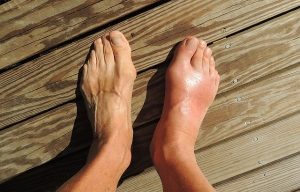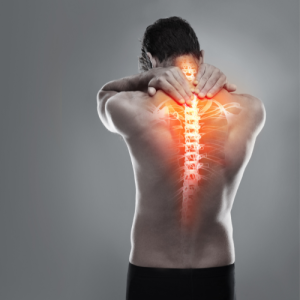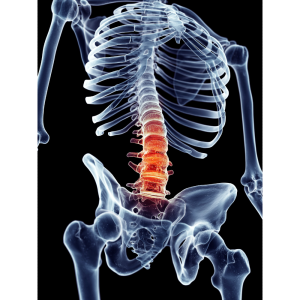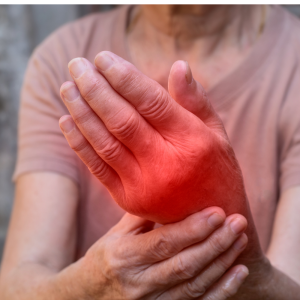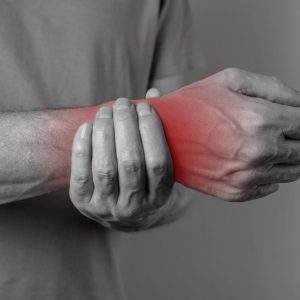Are You Having An Ankle Pain?
Ankle pain refers to any discomfort or pain experienced in the ankle region. It can occur for various reasons, including injury, arthritis, and normal wear and tear. Individuals may experience pain or stiffness in different areas around the ankle, swelling, and difficulty bearing weight.
Typically, ankle pain can be alleviated with rest, ice therapy, and over-the-counter pain medications. Healthcare providers are equipped to treat ankle injuries and arthritis, often without surgery. However, surgical intervention may be necessary in severe cases such as a broken ankle bone or when non-surgical treatments fail to improve the condition.
Physical therapy is also effective for healing ankle injuries or post-surgery recovery. It aids in strengthening the muscles supporting the feet and ankles, providing pain relief, and preventing future injuries.
What are the components of the ankle?
The ankle is a vital musculoskeletal system part that supports the body’s weight and facilitates standing, balancing, and movement. It comprises several structures, including bones, ligaments, tendons, muscles, and soft tissues. The ankle joint, a flexible joint, enables movements such as pointing, flexing, rotating, and side-to-side motion of the foot.
The ankle joint is formed by meeting the lower leg bones (tibia and fibula) with the foot bone (talus). Ligaments play a crucial role in connecting these bones. Due to the complexity of the ankle’s structure, it is prone to injuries.

How common is ankle pain?
Ankle pain and injuries are quite common. Individuals over the age of 65 engage in sports or activities involving jumping, side-to-side movements, or quick changes in direction, and those who are overweight or obese are more likely to experience ankle pain.
What are the most common causes of ankle pain?
Ankle pain can result from various injuries and conditions. Some of the most common causes include:
- Bursitis: Inflammation of fluid-filled sacs (bursae) that cushion the bones during movement.
- Fractures: Bone breaks or fractures caused by accidents or injuries.
- Sprains: Stretching or tearing of ligaments due to forceful rolling or twisting of the ankle.
- Tendonitis: Irritation and inflammation of tendons, which connect muscles to bones. Tendon tears may require surgical repair.
- Arthritis: Pain and stiffness in the ankle joint due to cartilage breakdown. Rheumatoid arthritis and osteoarthritis are common types.
- Flatfoot: Lack of or very low arch in the foot, leading to pain and swelling in the ankles and feet.
- Gout: A type of arthritis caused by uric acid buildup, resulting in the formation of crystals in the joints, including the ankle.
- Infection: Various infections, such as cellulitis and osteomyelitis (bone infection), can cause swelling and pain in the ankle joint.
How will my healthcare provider determine the cause of ankle pain?
To determine the cause of ankle pain, your healthcare provider will thoroughly examine your ankle and foot. They will assess for swelling, pain, and bruising.
Diagnostic tests, such as X-rays, CT scans, or MRI scans, may be ordered to evaluate the extent of damage to bones and soft tissues.
In cases where infection is suspected, a biopsy may be necessary. During a biopsy, a small tissue sample is taken and sent to a laboratory to check for bacteria.
What can I do to relieve ankle pain?
Home remedies and self-care measures can relieve most cases of ankle pain. It is essential to follow your healthcare provider’s instructions.
Common at-home treatments for ankle pain include:
- Rest: If you have experienced an ankle sprain or similar injury, you should avoid putting weight on your feet for a specified period. Your healthcare provider can guide you on the recommended duration of rest. Crutches or a walking boot may aid mobility without bearing weight on the ankle.
- Ice therapy: Applying ice or a cold compress to the affected area for 15 to 20 minutes at regular intervals can help reduce swelling.
- Compression: Your healthcare provider may recommend using an elastic bandage to wrap around the ankle, providing compression and reducing inflammation. Be cautious not to wrap it too tightly.
- Elevation: Elevating your ankle above heart level while resting can help reduce swelling. This position can also be maintained while sleeping.
- Over-the-counter pain medication: Nonsteroidal anti-inflammatory drugs can alleviate pain and reduce swelling. It is highly advisable to consult your healthcare provider before taking any medication.
- Supportive footwear: Wearing shoes that offer adequate support to the feet and ankles is crucial. Avoid loose-fitting or unsupportive footwear like flip-flops or sandals. Proper footwear becomes even more critical during sports activities to prevent ankle injuries.
How do healthcare providers treat ankle pain?
Most ankle injuries respond well to at-home treatments. However, more severe injuries may require medical intervention, including surgical procedures. The treatment choice depends on the underlying cause of the ankle pain.
Standard treatment options include:
- Braces and splints: Ankle braces or splints can provide stability and pain relief. Your healthcare provider can recommend the most suitable option based on your lifestyle and activity level.
- Joint aspiration: This procedure involves removing excess fluid from the joint using a needle. Joint aspirations help alleviate pain and reduce swelling.
- Medications: Various medications, including anti-inflammatory drugs, can effectively reduce inflammation and alleviate ankle pain. Medications designed explicitly for arthritis or gout can provide significant relief.
- Orthotic inserts: Custom-made or store-bought orthotic inserts can be placed in your shoes to support and stabilise the foot, ensuring proper alignment.
- Physical therapy (PT): A personalised PT program can enhance flexibility and strengthen the muscles supporting the ankle. Your PT will devise a plan of specific exercises and stretches tailored to your needs. Regularly performing these exercises and stretches is essential.
- Steroid injections: Cortisone shots, administered directly into the joint, can reduce inflammation and pain, providing relief.
- Surgery: In cases where ligaments or tendons are torn, various surgical procedures can repair the damage. Surgical options may also include relieving arthritis pain, correcting flat feet, or ankle joint replacement surgery to restore functionality and alleviate pain.
How can I prevent ankle pain?
Although it may not always be possible to avoid ankle pain entirely, maintaining good overall health can help keep your bones, ligaments, and tendons strong.
Here are some preventive measures:
- Maintain a healthy weight: Excess weight places additional pressure on your joints, including the ankles.
- Strengthen supporting muscles: By strengthening the muscles surrounding your ankles, you provide better support and reduce the risk of injury.
- Listen to your body: Do not ignore pain. If any movement or activity causes discomfort, take a break and rest. If the pain persists, seek medical attention. Continuing to exercise despite pain can worsen injuries.
- Warm up adequately: Before exercising, ensure you warm up and stretch properly. This helps prepare your muscles and reduces the chances of damage.
Are you experiencing ankle pains? Book an appointment today to have your ankle pains checked by our orthopaedic specialists.




